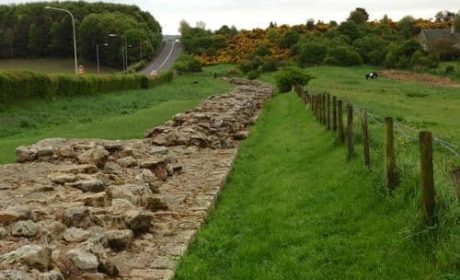Active travel opportunities abound all over the world, but long-distance walking is quickly becoming a popular way of travel for a lot of boomers. Blame it on Spain’s much romanticized “El Camino” or the recent blockbuster detailing the everyday trials and tribulations that come with this slow means of travel, either way, a walker’s perspective is a wonderful way to see the world. Today’s guest writer, Barbara V. Anderson, author of Letters from the Way, is here with some advice on how to properly explore one of Britian’s favorite walking trails.
When I retired I discovered long-distance walking, a natural extension for a lifelong walker with newly found time. In 2012, I walked 500-miles on the GR65 and in 2013, 600-miles on the GR653 — both across southern France. All over Europe, boomers are taking to the road, or rather to the path, walking town to town, hostel to hostel, whether on pilgrimage or for sport, and I have enthusiastically joined their ranks. In fact in spring and fall, many trails are walked almost exclusively by people over fifty.
In 2014, I decided to walk two 100-mile trails in Britain, Hadrian’s Wall and the West Highland Way. Britain is a country of long distance trails crisscrossing public and private lands. Trail access was codified in Right to Roam legislation. Fundamentally when an established footpath crosses private property, public access must be allowed.

How serious is the Right-to-Roam? Here were the instructions at the top of one my maps:
“Respect Right-to-Roam:
- If you come to a gate that is open, pass through the gate and leave it open.
- If you come to a gate that is closed open the gate, pass through and close the gate behind you.
- If you come to a gate that is locked, climb over the hinged end.”
So my English walking adventure began. I bought maps and a guidebook. After walking twice in France using French guidebooks, I assumed I would have no trouble with English. OK, you try….
- “Walk on the towpath in the direction of the hand gate”
- “Turn left at the unmade road (doesn’t that sound like the town overslept and forgot to make their road)”
- “Turn right at the brow of the rise”
- “Keep to the L hand path”
- “Pass through the lay-by”
- “Make a sharp left at the hand bend; and cross the stile.”

A stile, what is a stile? One crosses a stile to enter or leave private property. It can be a ladder over a stone fence, a gate, or a step-over pass-through. Stiles led me into fields of golden rapeseed, murders of crows swirling like black clouds over freshly plowed soil, flocks of sheep, and herds of cows. Admittedly, walking through farm animals is a new experience for me. Sheep are OK. They take one look at an approaching walker and flee. Sheared sheep are a bit more petulant but they eventually move on.
Cows on the other hand are big — very big — and they don’t move on. I was told to shout at them. Well, it turns out cows are not afraid of me. I waved my sticks and shouted, “gitta-long there, gitta-long there” at ’em (I was raised in Arizona, so I assumed I spoke cow). The cows just stood there and stared. As far as I can tell that is what cows do, stare. So when I came upon cows, I was the one who walked around. Then one day, five cows lined up shoulder-to-shoulder across the path looking like the Jets from West Side Story. They turned in perfectly choreographed unison, staring all the time as they watched me walk away. I wouldn’t have minded a fence between the privately-owned cows and publicly-walking me.

Usually I opened and closed gates into fields but one day the directions said to go through a gate between two houses. I opened the gate and walked along the side of a home into a backyard where three children were playing. I was very embarrassed and apologetic but the children explained that I was indeed on the right path and should simply continue on through the back gate.
Gates create their own challenges. There were at least 50 maybe 100 gates and there must be just as many latches. Do you pull up, to the side, inward, push away, over the top, push down, hook it, force it (kissing gates), buckle it, raise it? I was quite embarrassed by my gate-latch learning curve until an Englishman called me over to help him unlatch the gate blocking his path.
Find it, go over it, open it, go through it. It’s all part of the fun and part of the hiking adventure. After all, in Britain, you have a right to roam – you just have to understand the language, read your maps, and solve the gate latch puzzles.
Have a great trekking tale to share with us? Come join the conversation at the My Itchy Travel Feet page on Facebook. Or send us an email with your thoughts.



